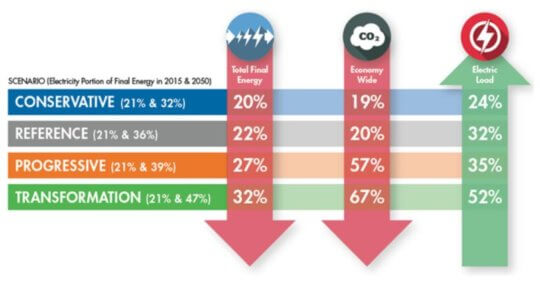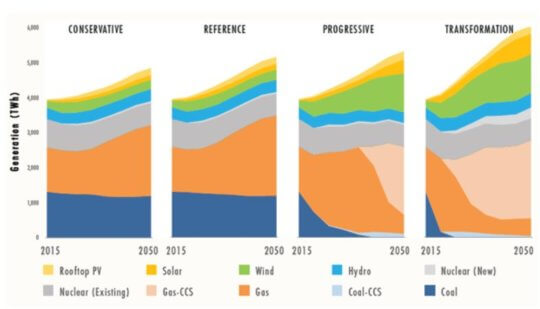American Clean Power
Electrification
Electrification refers to the transition to electric-powered technologies across all economic sectors—for example, the transition from diesel to electric-powered buses. Electrification is a climate change mitigation strategy and will increase electricity demand. We should meet that demand with clean energy.
Electrification can be a powerful greenhouse gas reduction, if we generate more of our electricity using clean energy.
The long-term electrification trend means that electricity will start to power more of our everyday products across the transportation, building, and industrial sectors.
The Electricity Power Research Institute (EPRI) estimates that energy efficient electrification could boost U.S. electricity demand up to 52% from a 2015 baseline by 2050. This offers growth opportunities for American clean power to provide more low-cost electricity to consumers.

The transition to electric vehicles (EV) is one of the largest potential areas for electrification. The National Renewable Energy Laboratory (NREL) estimates the U.S. could have as many as 240 million light-duty electric cars and trucks on the road by 2050. Importantly, EV buyers are more likely to be interested in the source of their electricity and are more likely to support renewable energy integration. Should EV expansion be coupled with new wind and solar capacity additions and transmission and storage investments, Americans could see positive economic and environmental benefits in the form of increased reliability, stable prices, and reduced carbon pollution. In particular, wind power pairs especially well with transportation electrification. EV users tend to charge their vehicles most often late at night, when wind generation is strong.
Even the most conservative estimates suggest that electrification will present new opportunities for clean energy growth, as the country seeks solutions for meeting higher electricity demand in the long term.

